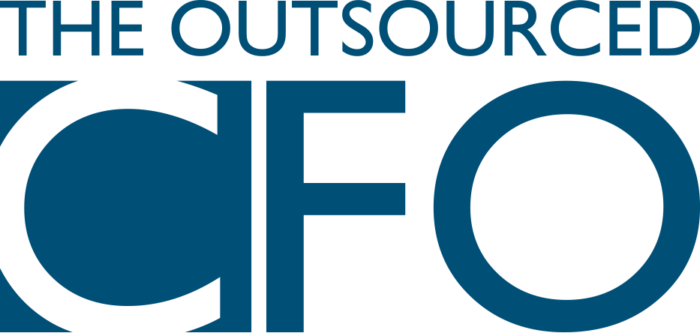
Exit Strategy – how to create choice for the business owner
The goal of a good exit strategy should be to create choice for a business owner. One of Stephen Covey’s 7 habits is to begin with the end in mind. When you commence a new business venture or acquire a business, you should have a clear picture about what you want to achieve out of it and at what point you leave. Exit should be a clear choice and the trigger point at which an exit will occur should be clear from the start.
Unfortunately, many businesses evolve in such a way that the owner is tied to the business and can’t see a way out. In these circumstances, developing an exit strategy is essential, not to create an obligation to exit, but to derive a formula so that you can exit the business at a point of your choosing.
There a number of common reasons why a business owner becomes tied to their business.
- Key source of income – the initial reason why the business was commenced will be linked to providing an income source. Passion, having a purpose, answering your call in life are all things that come into it, but a source of income to pay the bills is always going to be up there. Having established an income stream through the business and become dependent on it, exiting can mean losing that source of income or putting it at risk.
- Business Knowledge – when a business owner starts a business the business Intellectual Property (IP) is developed around technical matters and how the business operates. Quite often that technical knowledge can sit with the owner and not have been passed on. The owner may feel that if they left the business could not continue as this IP resides with them
- They don’t Trust People left to run it – if the owner was to leave, they may not have the confidence in the people who are left to run the business in a profitable fashion.
- Lack of clear and documented processes – it may not be easy for the business owner to explain how the business operates because a lot of the information is in their head. How to deal with different customers, suppliers and technology could throw up many inconsistencies to the point it becomes impossible to explain.
Apart from point one on the list, the other factors represent single points of failure where if the business owner left, the business can’t operate. Putting to one side the personal attachment of the owner to the business, it is simply good business practice to remove any single points of failure from any business. This requires a process of risk management and a long term plan as there is no short-term remedy.
The first step in the process is to look at all the risks in the business. The context of risk in this situation is to identify anything that could lead to business failure. Items 2,3 and 4 above would be risk areas that could lead to business stress or even failure.
The next step would be to put in place a plan to mitigate or address those risks. This could be a 5 year plan which addresses the key areas of risk in the context of the business growth trajectory.
The risks identified here could be mitigated in the following fashion:
Documentation of Processes – all the key steps to run a business need to be clearly documented so that its easy for another person to understand. Training can be developed around these processes to ensure we have a trained workforce that regardless of “who” does, the same result is achieved.
McDonald restaurants are a fantastic example of how this can be achieved. On a typical Sunday, a team of school students essentially run the restaurant. They are not required to think how to cook a burger, they are instructed to put the patties on the grill and set a timer. When the timer finishes, they remove the patties, they are not required to check they are cooked, they are instructed to follow the process. Specific well documented processes allow a 14 year old to make a Big Mac or cheeseburger fit for consumption by the public. The business owner of McDonalds does not have to cook all the Big Macs! Whilst a small business would not go to this extent initially, working towards this model over time by documenting all your business processes helps to remove a single point of failure.
Customer Alignment. When we start to look at processes, common feedback is that every customer is different. This is a common fault of newer businesses that in trying to establish themselves within a market structure they have to be extremely flexible and almost customize their offering for every situation. Unless they are charging a premium for a customized offering, this is highly inefficient. As the business becomes more established and gains more confidence in its offering, rather than the “customer knows best”, the business can be confident that it knows its customer and knows what’s best for the customer. Henry Ford achieved this end by allowing the consumer to choose any color as long as it was black. This approach will mean less complex but still unique processes as the business standardizes. These processes become more easily documented and training is much simpler.
Putting the right structure in place. This refers mainly to people – at some point a business owner should surround themselves with good people so that the business is managed by a team and not an individual. This can only happen as the business grows and can afford the additional structure. A typical leadership team would include department heads for Sales, Marketing, Operations and Finance, there may be other depending on the business. The team would take on more and more responsibility over time to the point where the owner is no longer the person running the business – the team is. Eventually the business owner will develop a level of trust in their team such that they believe the team will run the business better than they can.
Secure Intellectual Property. In some way the key technical competencies of the business need to be locked away so they can’t be stolen by others, including staff, but the business still has to be able to operate and continue. It is well understood that only a handful of people know the recipe for Coca Cola, yet it is sold all over the world. It is possible to make Coca Cola without knowing the recipe because there are well defined processes. The business should aim to design processes that lock away its IP but still enable staff to be trained to produce the product or service.
If over time as the business grows these matters are addressed, then the owner has created an exit strategy. By establishing processes, people can be trained, and by putting in place a leadership team he/she has people who can be trusted to run the business. This addresses the issue with having a single point of failure and allows the business owner to choose the time of their departure. They could step back from the day to day and leave things to the remaining members of the leadership team. They could stay involved by relinquishing the CEO role for a role on the Board. They will always remain a shareholder and continue to receive dividends for as long as they own the shares. If they choose to sell, the value of their shares will be maximized if the business is being run independently thus making way for a healthy retirement.
Getting to this point to provide choice for an owner around when to exit a business, requires some key investments in structure. Investment in dementing process and training manuals, investment in people. This investment provides choice for the business owner, and also an investment in ensuring the potential value of the business is maximized.
ABOUT BRIAN DOUGHTY
Brian Doughty is founder of the outsourced CFO which is a part time CFO service for small to medium sized businesses. Brian’s experience in large corporates and small business is unique and has enabled him to develop a simple to understand set of tools which will help business owners engage staff, monitor performance and achieve their goals. For more information, visit www.theoutsourcedcfo.com.au.
